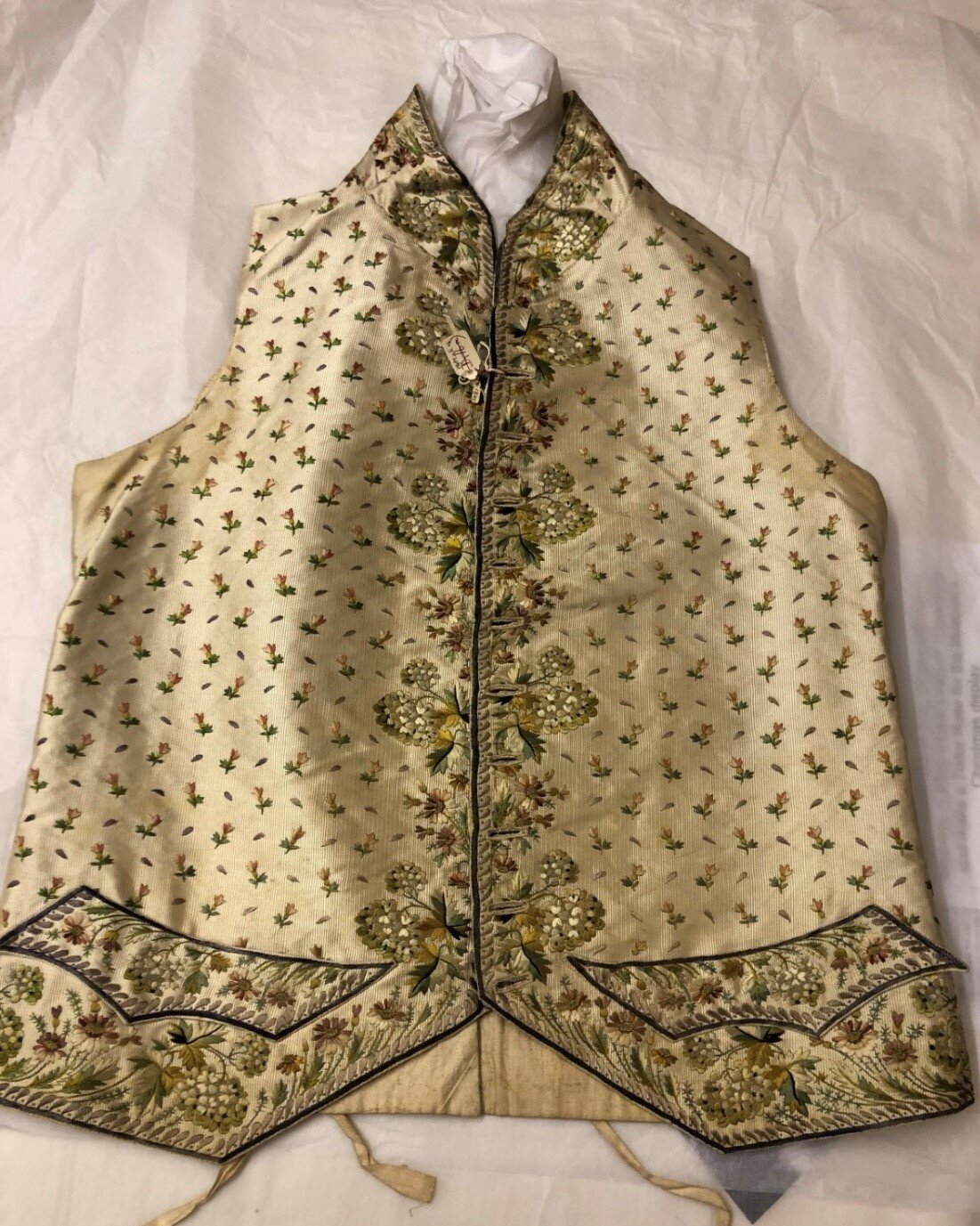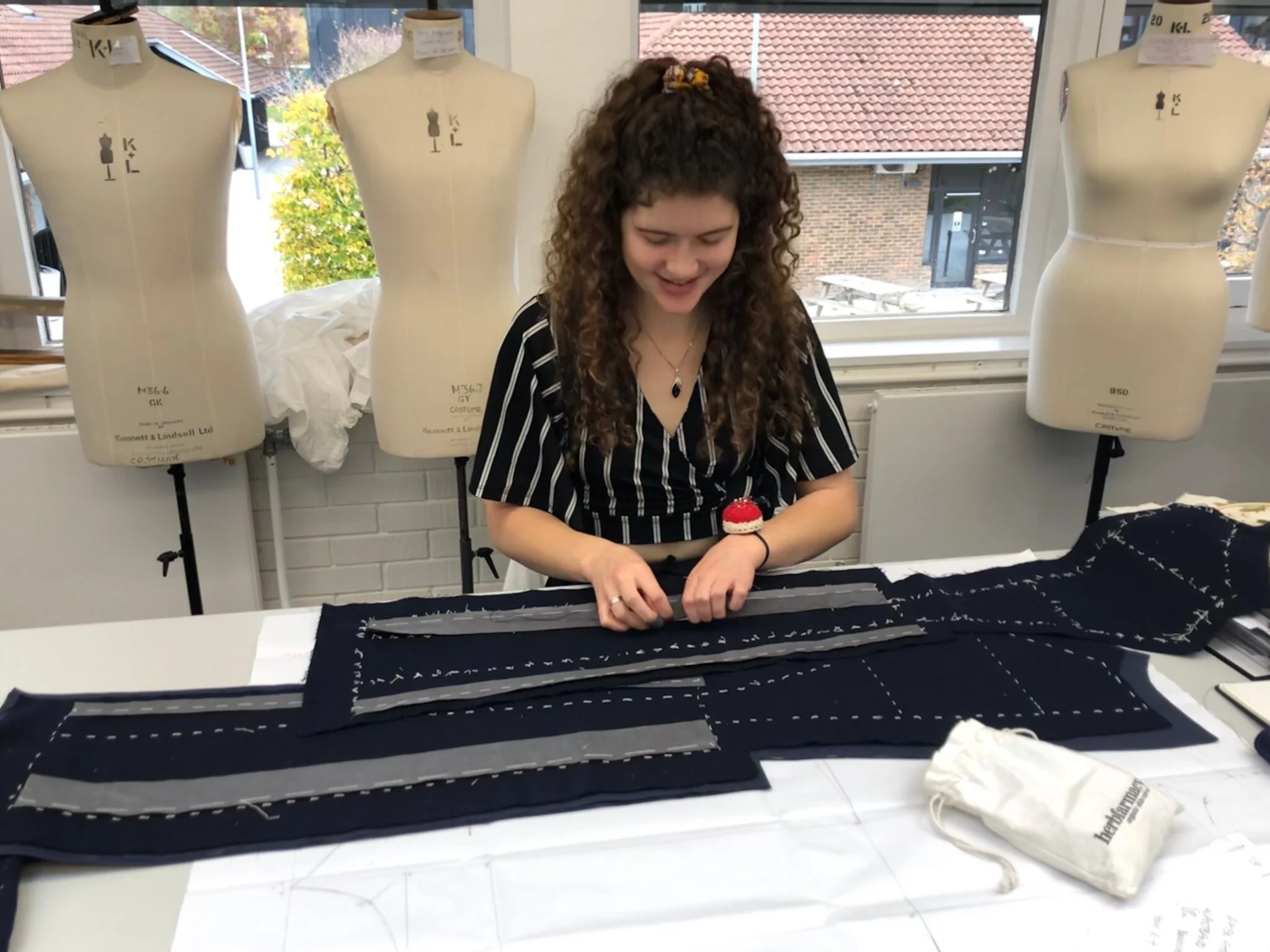
Court waistcoat
Recreating an embroidered court waistcoat
by Amy King-Hale, Bournemouth Arts University graduate, and costume designer.
During my time at university, I chose to collaborate with The Salisbury Museum on the wonderful Look Again – Discover Centuries of Fashion project. As part of this, I had the opportunity to interpret a c.1790s-1800s embroidered waistcoat and tailor garments to complete the ensemble.
The brief involved using as many historically correct techniques as possible, while still creating a costume that would be suitable for being handled in educational workshops with young people. Through these sessions, the museum aims to engage them through touching and trying on the costume. With the original garments being too fragile to study up close, this project will enable them to feel the opulence of the grosgrain silk, the smooth satin stitch of the embroidery and the texture of the moleskin to help them fully immerse in the museum’s collection.
Embroidered waistcoat, ©The Salisbury Museum collection
Measuring in the store, © Amy King-Hale
To start the project, I visited the museum to discuss the brief in more detail with Katy England, the curator, and Elizabeth Turner, an Arts Society volunteer.
I was able to take important measurements of the embroidered waistcoat. It was amazing to see such a beautifully delicate piece so up close to really appreciate the layers of tonal, floral embroidery and the sumptuous grosgrain silk.
Amy recreating the waistcoat, © Amy King-Hale
When discussing the waistcoat with Elizabeth, she thought that certain features suggest it was made from an earlier panel from c.1770s-80s as the larger skirt flaps reflect the earlier fashion.
An unused button can also be seen as part of the lining which supports this theory (Turner, 2019). It is brilliant to think that such beautiful waistcoat panels were being reused to match the fashion of the time rather than simply discarded when the style was no longer fashionable.
I find it truly fascinating to visualise the individual who might have worn a garment like this and whether he would have mixed and matched his choice of frock coat and breeches to offer variation to his look. An elaborately decorated waistcoat such as this would ‘only have been worn at court’ (North, 2018) so it is worth thinking about the way he felt while wearing this stunning piece and if he walked more confidently knowing that his look was in line with the latest fashion.
Through my further research of embroidered waistcoats, frock coats and breeches of the period, at The Hampshire Cultural Trust and in the archive at The Bournemouth Arts University, I was able to decide on what could have been worn with the waistcoat.
Amy recreating the waistcoat, © Amy King-Hale
This was invaluable for the construction process as I noted various authentic details that would enable me to meet the brief with a period accurate costume.
For example, the pockets seen on the original are false which was common in a period where garments were becoming more tight fitting. Therefore, they were still alluded to with decorative pocket flaps (Hart and North, 1998).
Amy recreating the waistcoat, © Amy King-Hale
Finished replica waistcoat and frock coat, © Amy King-Hale
Instead of buying pre-embroidered silk to use for the waistcoat, I wanted to hand embroider a design myself as I felt that this would create a more authentic finish.
I created various samples of the techniques that I planned to use including hand embroidery (of course!), hand covered buttons, a welt pocket for the frock coat and a few fall front samples for the breeches.
All the late nights I spent embroidering with my frame and head torch at the ready were worth it as I had created a costume that I was extremely proud to hand over to the museum.
Finished replica waistcoat, © Amy King-Hale
Website: www.amyking-hale.co.uk
Instagram: amykh.costumier
Bibliography:
Hart, A. and North, S. (1998). Historical Fashion In Detail The 17th And 18th Centuries. London: V & A Publications.
North, S. (2018). 18th-Century Fashion In Detail. London: V & A Publications.
Turner, E. (2019). Arts Society costume volunteer. Discussion at museum. 11 October 2019.








